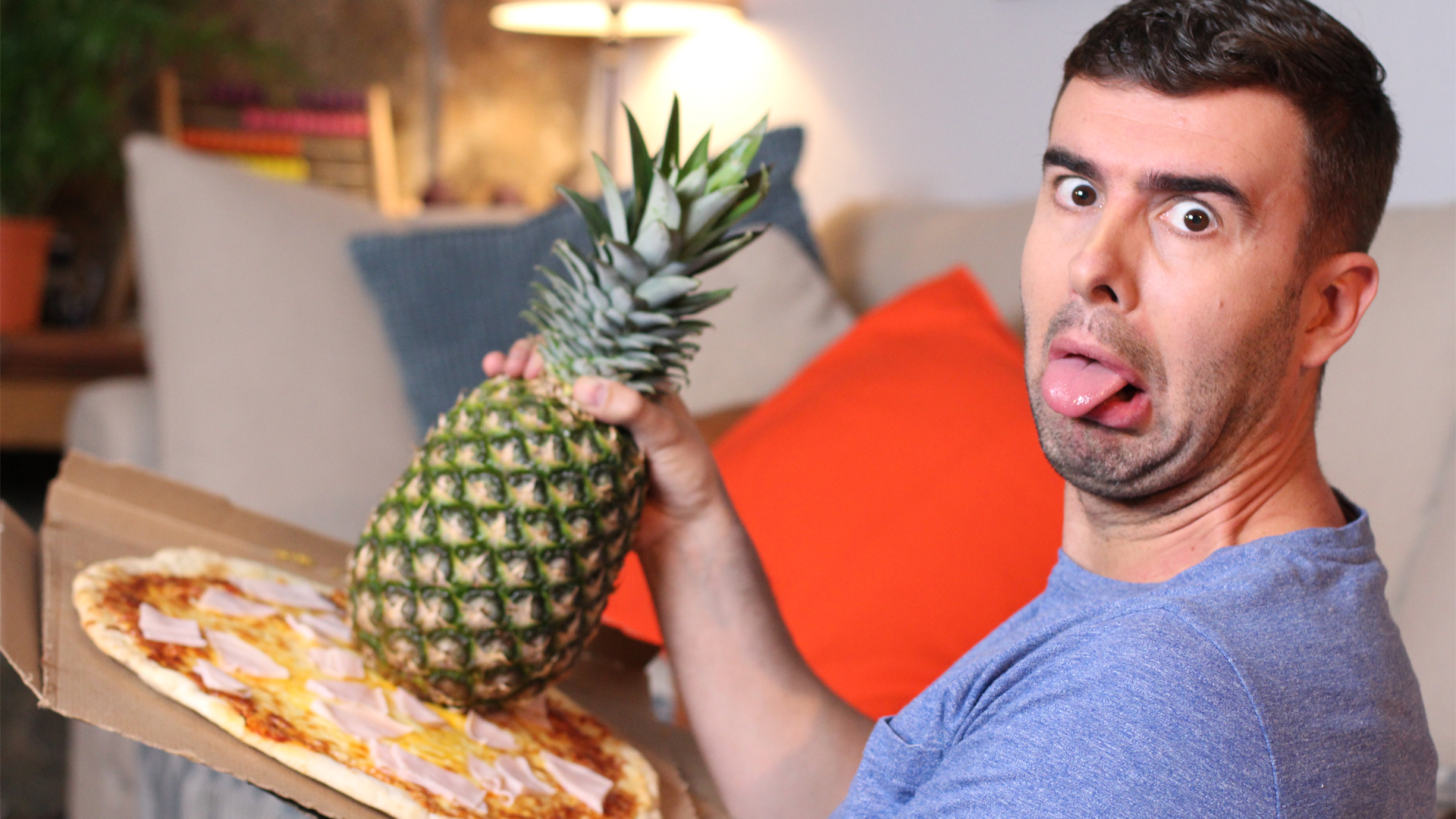The Hawaiian Pizza was invented sixty years ago at a Chinese restaurant in Canada. Topped with ham and pineapple, the famed recipe has been causing controversy ever since.
The tiki aesthetic had swept across North America in the early 1960s. Perhaps best known for colorful, fruity cocktails, the tiki style influenced everything from restaurants and bars to apartment complexes and home goods like soap. Reimagining pizza through the lens of the South Pacific style was inevitable.
The pizza's inventor, Sam Panopoulos, was a Greek-born immigrant who had moved to Canada as a young man. He and his brothers Elias and Nikitas operated a chain of restaurants throughout the Ontario region. At Satellite, a family-friendly, fusion restaurant in Chatham, Ontario, diners could eat both American-style cheeseburgers and Chinese food. Then one-day Panopoulos decided to add pineapple to a pizza slice.
Despite his unconventional creation, Panopoulos's first encounter with pizza was in Naples. The ship he was traveling on from Greece had docked there on its way to North America. In the 1950s, when Panopoulos arrived in Canada, pizza remained a niche food, only just then becoming available outside of Italian enclaves. That would soon change, and a few years later when he visited a pizzeria in Windsor, Canada, he found himself wanting to experiment, writes Lina Dimopoulos at Drive Magazine.

Back at Satellite, Panopoulos set to work on his pizza. He sought out new, innovative toppings. Drawing inspiration from sweet and savory Chinese menu items, he decided to try pineapple. Since the restaurant already cooked dishes with the fruit, there was plenty of "Hawaiian" brand canned pineapple available, and after tasting his creation, he named the pizza for the canned fruit rather than the state.
Nevertheless, the toppings are particularly Hawaiian. Pineapples are not native to the Islands but have been a major industry since the early 20th century. At one point, Hawaii provided more than 80% of the world's pineapples. Hawaii also has a strong affiliation with ham–or rather, Spam, the canned ham. In World War II, canned meat was a particularly attractive way for feeding soldiers because it didn't spoil even in the extreme heat of the South Pacific. Hormel shipped 100,000,000 pounds of spam to soldiers during the war. But Hawaii's love for Spam is a bit more nefarious. During the war, the United States sent Japanese Americans to concentration camps, but in Hawaii, too many people fit into this category. According to Erin DeJesus at Eater, the solution the government came up with was to ban fishing, an industry Japanese Americans in Hawaii dominated. The result was a reliance on imported meat like Spam, easily transported on ships to the island.
By 1971, the Hawaiian Pizza was on the radar of the North American Pizza Association. Based in Michigan, the organization's executive secretary told the New York Times about an exciting new pineapple and ham recipe, about a decade after Panopoulos started serving it in Canada. And by the 1980s, Hawaiian pizza had made it to New York City, available in at least one of the city's many Ray's pizzerias. Big chains like Pizza Hut and Domino's Pizza began offering variations on the Hawaiian, too. And in Singapore, where Pizza Hut opened an outpost in 1981, the Hawaiian has continually been a top-selling pie.

In 2004, Italy, under Prime Minister Silvio Berlusconi, enshrined into law the definition of a pizza. Local Neapolitan pizzaiolo Alfonso Cucciniello told the New York Times that a pizza made with pineapple isn't a pizza at all, but rather a cake.
In 2017, Icelandic president Guðni Thorlacius Jóhannesson created quite a controversy when he joked about outlawing pineapple on pizza. Pineapple advocates came to the defense of adding the fruit to pizza, and Iceland Magazine declared the incident Pineapple-Pizza-Gate. Jóhannesson eventually had to clarify that he lacked the authority to implement the ban.
Canadian Prime minister Justin Trudeau on the other hand, came out in support of Pineapple Pizza, stating on Twitter "I Stand behind this delicious southwestern Ontario Creation."
Searching For Italy host Stanley Tucci has no love for Hawaiian pizza either. While he's an adventurous eater, he told Today he finds the thought of pineapple on pizza repellent and that he tries blocking out the idea of it.
Despite these reactions, Canadians and Americans both love pineapple as a topping. A poll of Canadians in 2021 found 73 percent of respondents would definitely or probably choose pineapple, and 44 percent of Americans recently polled said they're okay with it.
As for Panopoulos, he sold Satellite in the 1970s. He never intended to revolutionize food, thinking pineapple was a rather ordinary combination. He passed away in 2017 at the age of 83.

